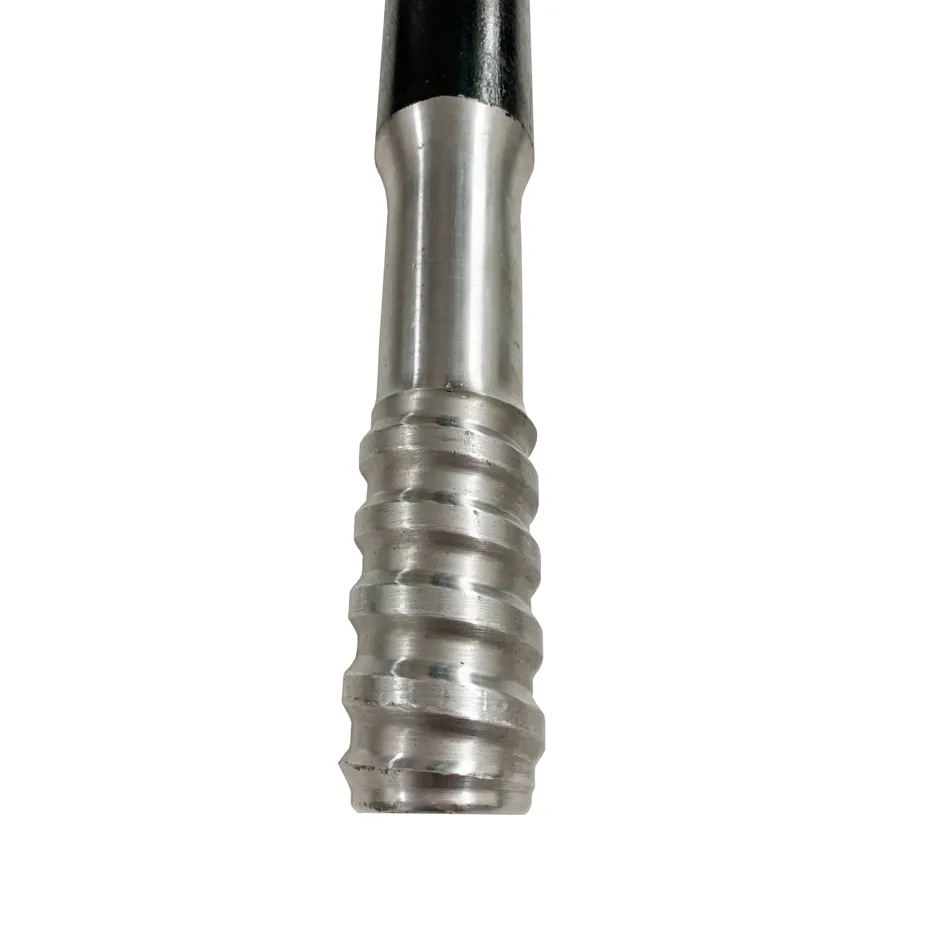
For drill rods treated with carburizing, the process is carried out in a pit furnace filled with carbon-rich gases. After a period of treatment, a hard, wear-resistant carbide surface layer is formed on the rod body and the inner wall of the water hole. The rod then undergoes air quenching and tempering, achieving a surface hardness of HRC58–60 and a core hardness of around HRC43.
For surface hardening, high-frequency induction heating, quenching, and tempering are used to achieve the same surface hardening effect. Afterward, the threaded sections are subjected to an additional round of heat treatment.
In terms of performance, drill rods treated with surface hardening generally exhibit better toughness compared to carburized rods, but they tend to have shorter fatigue life. These rods are suitable for drilling in interbedded or fissured rock formations.
Carburized drill rods, on the other hand, provide superior wear resistance and fatigue performance. However, the carburizing and air-quenching process requires very strict control. When drilling blast holes deeper than 20 meters, carburized MF drill rods combined with guiding retrac button bits can effectively control hole deviation and extend the service life of drilling tools.